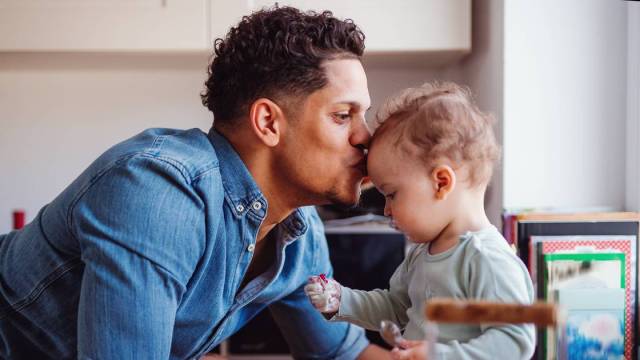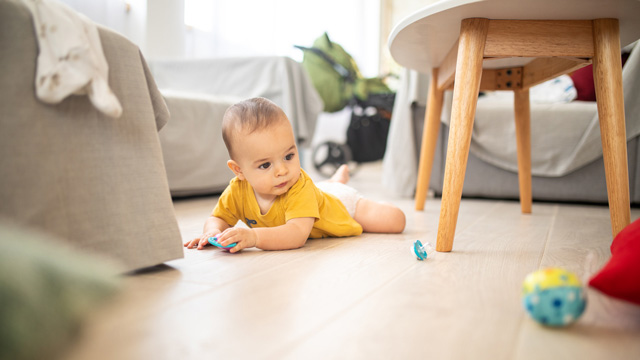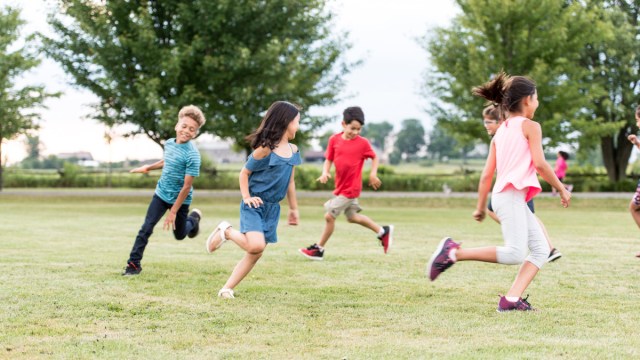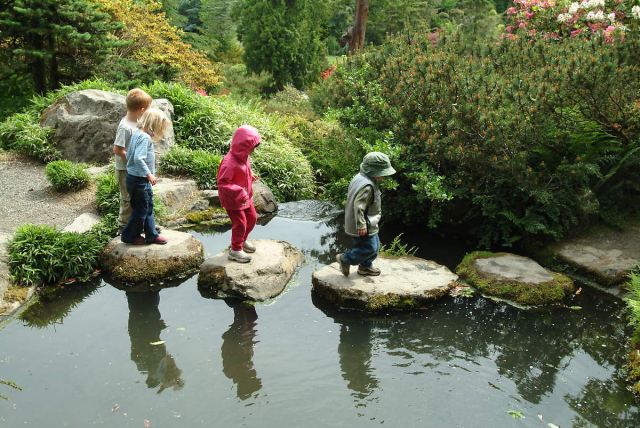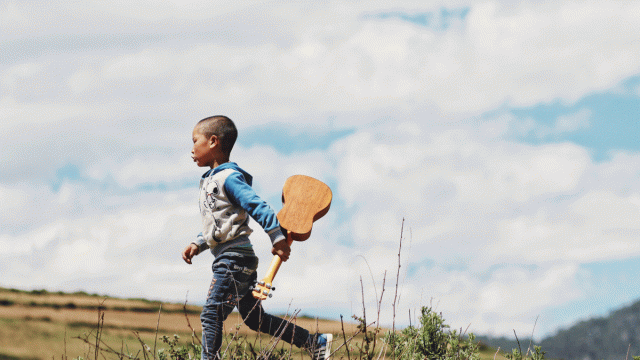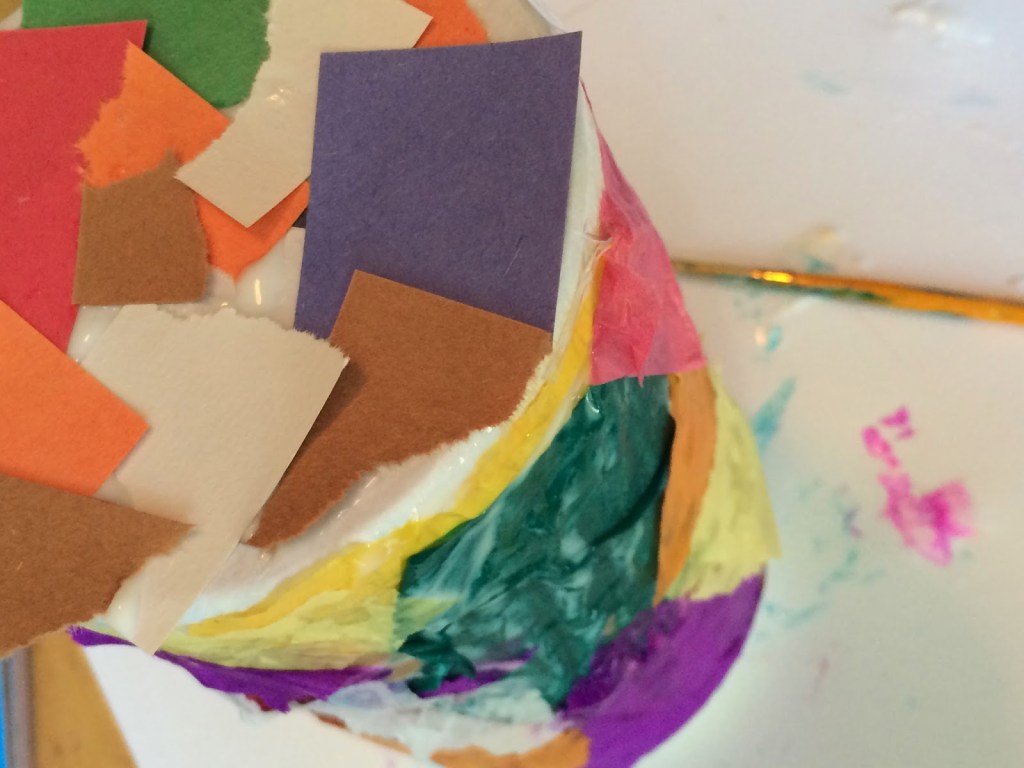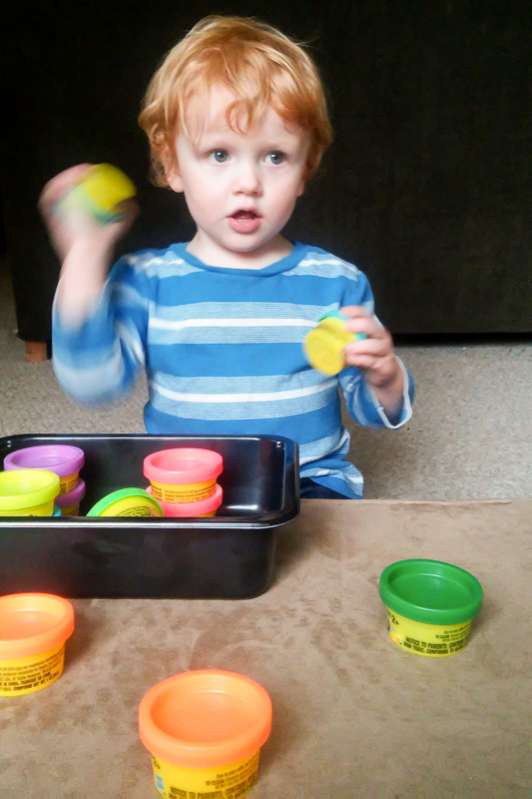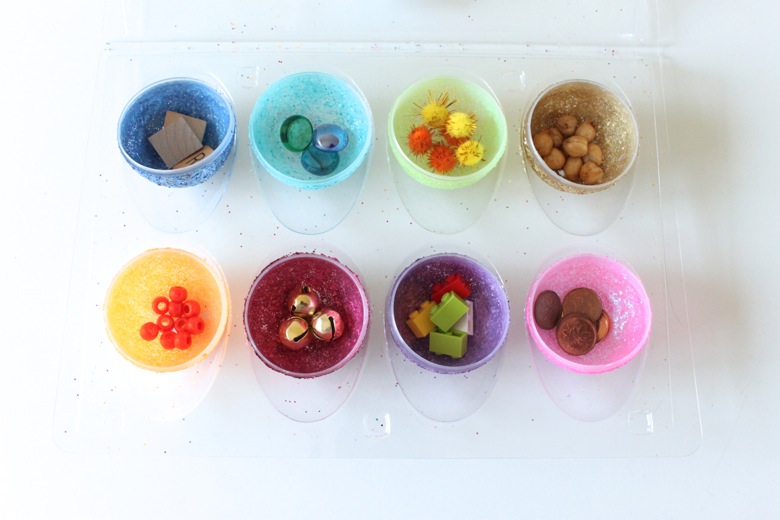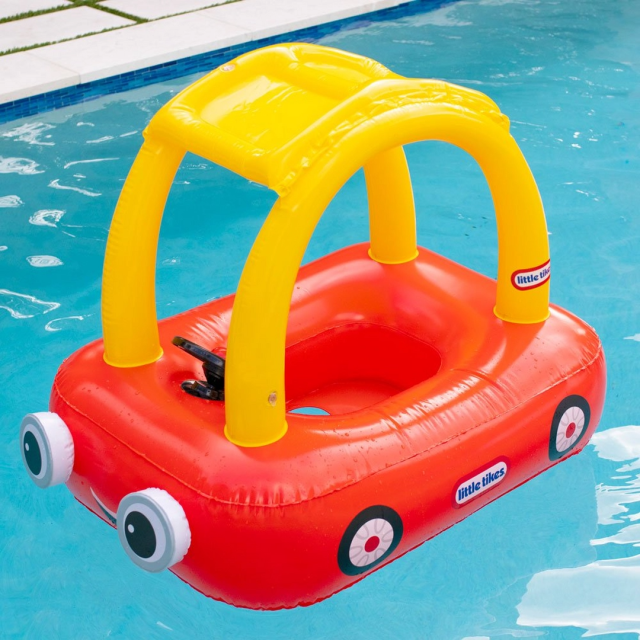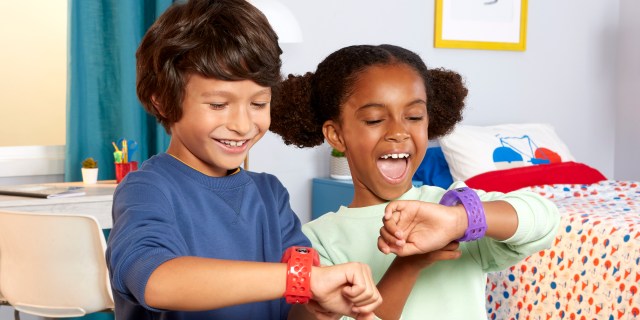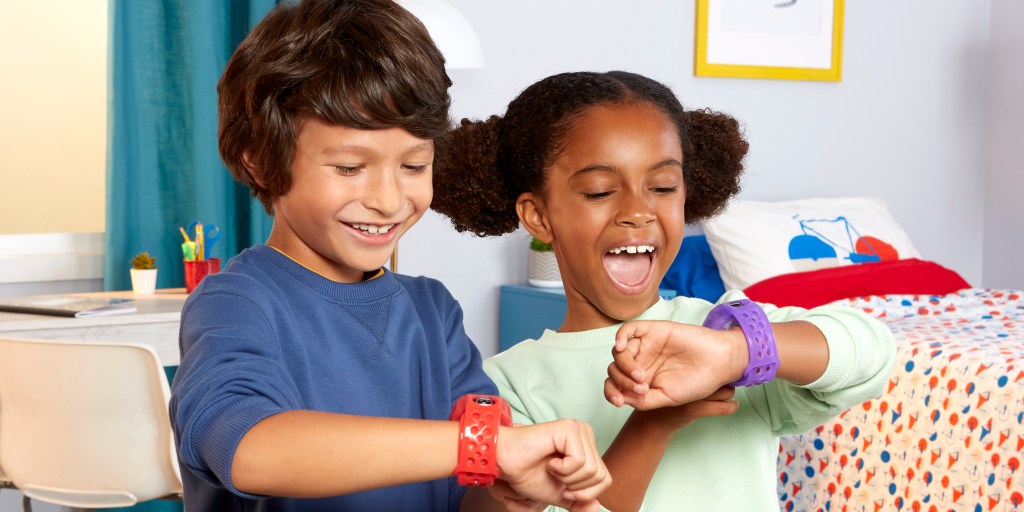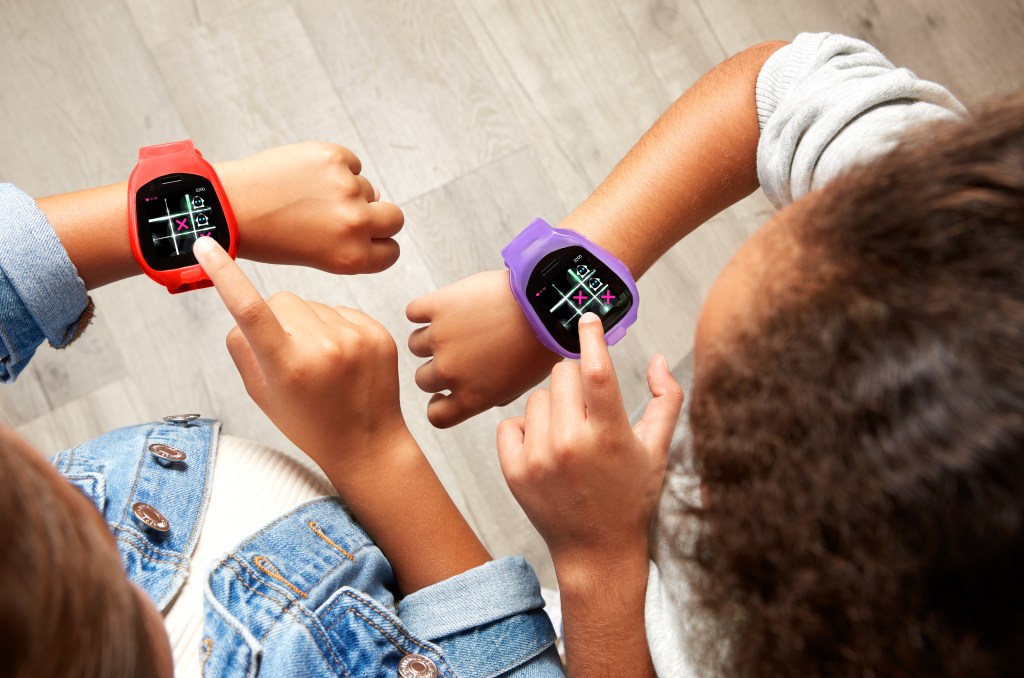You waited 9 months and baby is finally here. And even though you’re ready to have fun with that little bundle, baby—not so much (especially during those first few months). But in between the diaper changes, naps, and feedings, you and your little one can find time to play simple games that benefit baby’s development. Playing helps babies learn about the world and develop new motor skills and social skills. The key is knowing at what age they’re ready for baby games like peekaboo and blowing bubbles. Here’s an age-by-age guide for the best games to play with babies at different times during their first year.
Games for Babies: 0-3 Months

1. Imitation Game
Your face is your baby’s favorite thing to look at. Keep it about a foot away from your newborn so they see you properly, and then stick out your tongue or form an O with your mouth. Before you know it, baby will copy you. Bonus points for making silly noises to go along with your expressions.
2. Singing
Newborns might not be able to see you from across the room, but they can hear you, and they recognize (and love) your voice. Sing a lullaby or “Wheels on the Bus,” belt out your favorite song or commercial jingle, or make up a song about your daily activities. It doesn’t matter if you’re out of tune, your voice gives your baby comfort and joy.
3. Flashcards
While even the smartest newborn nerd isn’t ready for math or reading flashcards yet, simple images from cards or books get their attention. Black and white images, simple patterns and bright colors are easiest for them to see at this age. They also love images of other babies. All you have to do is hold up the card, point at the picture, and talk about the image. Or put it down in front of them to explore during tummy time.
4. Hanging Toys
Your little one might not be reaching out for toys yet, but looking at them is one of their favorite baby games. Hang a mobile above the crib or find an activity gym with hanging toys and lay baby on their back to enjoy. Baby-safe mirrors are great, too. Babies won’t know it’s their face, but that won’t dampen their enthusiasm for staring at it or reaching out for it.
5. Repetitive Routine
While the endless cycle of eating, burping, sleeping, diapers and baths may not be thrilling for you, it’s your baby’s whole world. Add some fun to the routine by singing a song during bath time, dancing after a diaper change, or stopping to look at framed photos of family members. Whatever you do, the key is doing it consistently.
Related: Baby Games: 7 Sure-Fire Ways to Amuse Your Baby
Games for Babies: 4-6 Months

6. Interactive Stories
Your little one is a bit more responsive at this age. Change up those simple newborn activities for slightly more interactive baby games. This is a great time to introduce games like “This Little Piggy.” They don’t require independent movement from baby, but kids find the story super fun.
7. Moving Tummy Time
Put tummy time in motion to mix things up. Once your baby has pretty good head control, lay them on their stomach on a small blanket. Then slowly pull them around the room. Make motor or train noises for even more silly fun.
8. Blowing Bubbles
You don’t need to wait until baby’s old enough to chase after bubbles to introduce then. At this age, babies are starting to see better, so they will be fascinated with the moving rainbows of bubbles. Blow the bubbles near them but not directly at them to keep the soap out of their eyes.
9. Echo Noises
When your baby makes a happy noise, make one back. If they blow bubbles with their lips, blow some back. You’ll get big smiles real quick from this imitation game.
10. How Big Is Baby?
It’s amazing how fast those early months fly by. Your six-month-old will seem huge in comparison with how little they were just a few months ago, making the classic “How Big Is Baby?” game all the more poignant. To play, hold baby’s hands and ask in a sweet voice, “How big is baby?” Then put their hands up over their head and say, “This big!” Mix it up by replacing “big” with different adjectives smart, sweet, etc.
Games for Babies: 7-9 Months
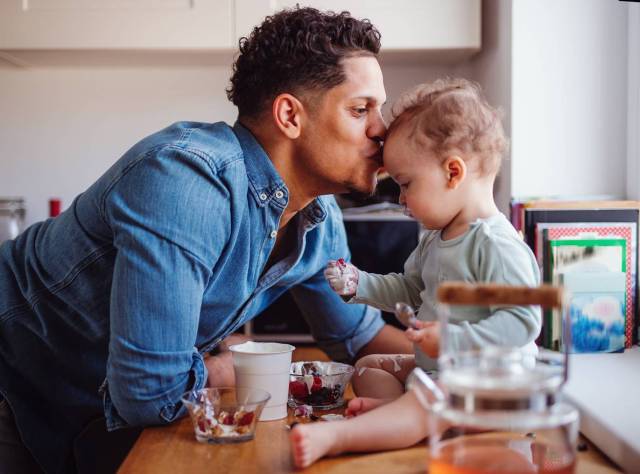
11. Patty Cake
You don’t need to retire those songs from the newborn stage, but continue to up the game with tunes that have motions and finger play to go along with them. Start by showing the motions to songs like “Patty Cake,” “Itsy-Bitsy Spider” and “Wheels on the Bus.” You can also help babies do the motions with their hands.
12. Peekaboo
By now your baby is beginning to have an understanding of object permanence, knowing that when things are out of sight, they aren’t gone forever. If your little one hasn’t already discovered the joy that is peekaboo, this is the perfect time to try it out. Hide your face behind your hands, hide baby’s face behind your hands, or pop out from behind a door or curtain. You can also hide or partially hide objects (like putting a musical toy under a blanket) to see if your child will look for them.
13. Flying Baby
At this age, your baby should have enough control and strength for some flying time on your knees. Lay flat on your back or slightly propped up on a pillow. Use your bent legs to support your baby’s body, hold their hands, and gently fly them around. You can go up and down, side-to-side or a combination of the two. Sound effects and silly songs are mandatory with this activity.
14. Roll the Ball
Once your child is able to sit, sit across from them and roll a ball toward them. At first, baby probably won’t roll it back, but they might pick it up and play with it or chew on it. When they lose interest in the ball, pick it up and roll it back to them to start the game over. Eventually, they’ll be rolling it back to you.
Related: The Smart Parents’ Guide to Montessori Toys for Babies & Toddlers
Games for Babies: 10-12 Months

15. Sensory Boxes
Nothing is more fun for your older baby than taking things out of a box and putting them back in. Fill a box or bin with a combination of balls, soft blocks, small books, scarves or baby-safe household items like a wooden spatula. Look for objects that have different textures and are big enough not to be choking hazards. Show your child how to take things out of the box and put them back in. It won’t be long before they’re dumping out and rearranging every box they can get their hands on, not to mention your purse and diaper backpack.
16. Obstacle Course
Let the baby games begin! Chances are your little explorer is on the move, or ready to be soon. Whether scooting, crawling, walking or full-on climbing, a baby-appropriate pillow obstacle course is a good energy burner. Set out couch cushions or pillows all around the floor. Demonstrate how to climb over, around or peek under them and then watch your kid go.
17. Dance Time
There are so many ways to enjoy dancing with your baby. You don’t have to stick to baby music; play your favorite tunes if you’d like. Sit on the floor together and bop your head and body or pretend to play an instrument. Baby might not be ready for air guitar yet, but it won’t take much prompting to get them bopping along to the beat. You can also hold baby in your arms and spin in slow circles or sway back and forth. Or sit them in your lap and bounce them on your knees in time to the music.
18. Stack & Attack
Stacking cups, stacking rings and blocks are a favorite for your almost one-year-old. In fact, any items that can be put on top of one another and knocked back down without breaking are fair game. Try plastic storage containers, empty yogurt containers, or small boxes and bring in your little destructor to hulk-smash them down.
19. Bath Splash
A few plastic cups, clean sponges and washcloths add baby thrills to the nightly bath. Use the cups to show how they can be filled with water and them emptied. Squeeze the sponges and washcloths on baby’s belly. Show baby how to smack the water to make a big noise.
20. Make Noisemakers
Fill a clear plastic container with dry beans or rice. Give it a shake and roll it along the floor to show your baby how to make music with it. Add a few colored pom poms to the container to make the shaking even more interesting for your baby.
Related: Play All Day: 20 Sensory Play Ideas for Babies & Toddlers
